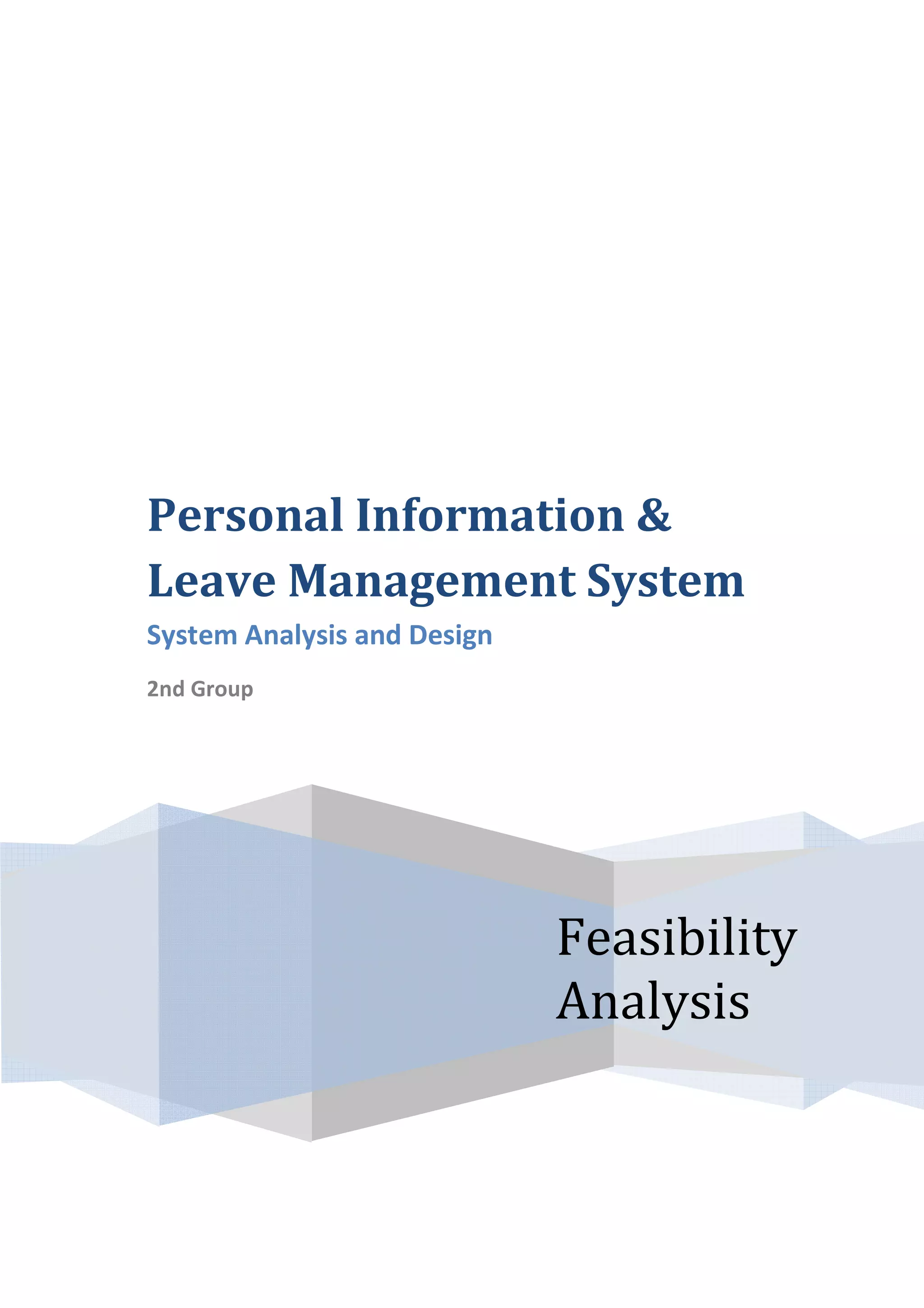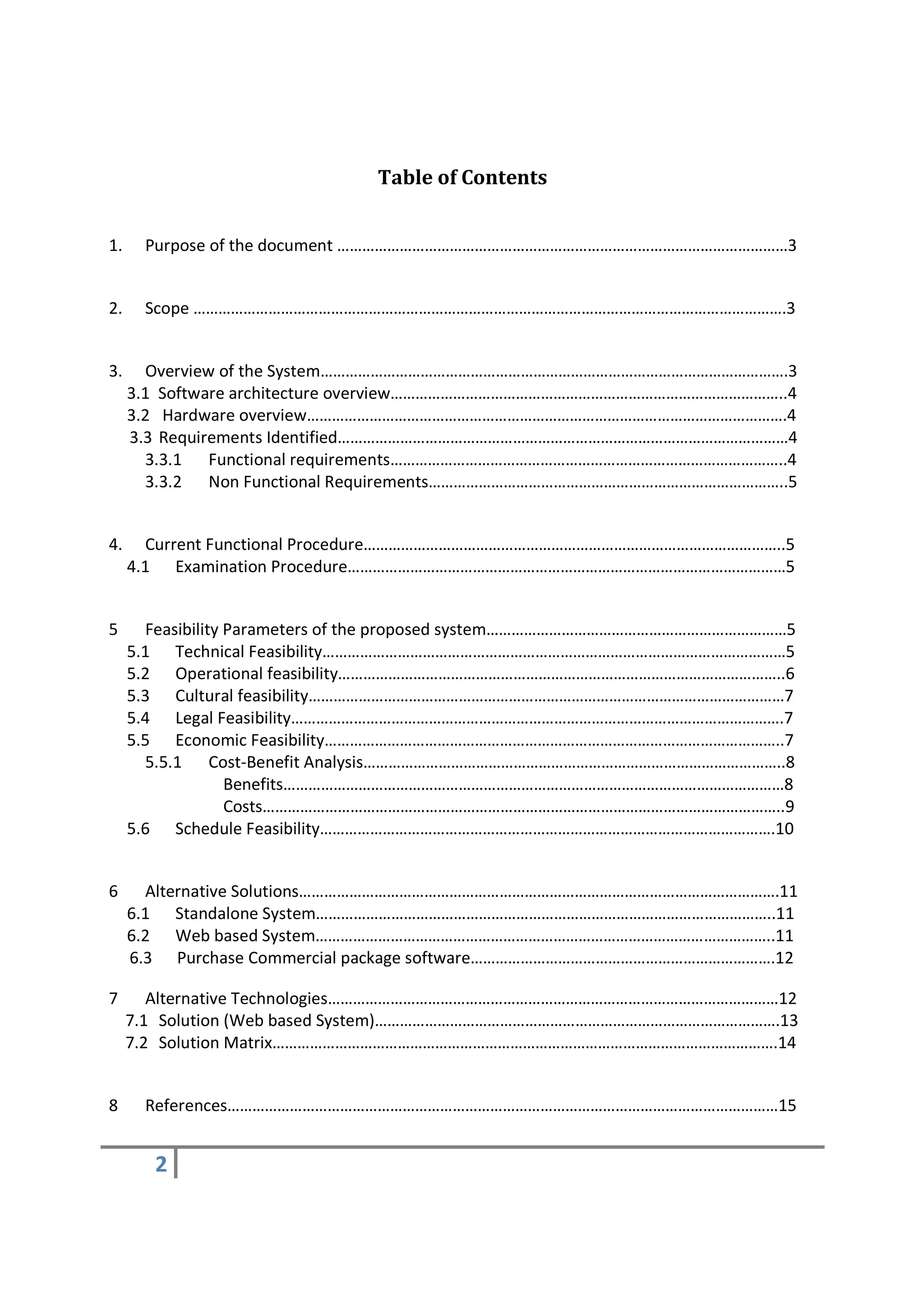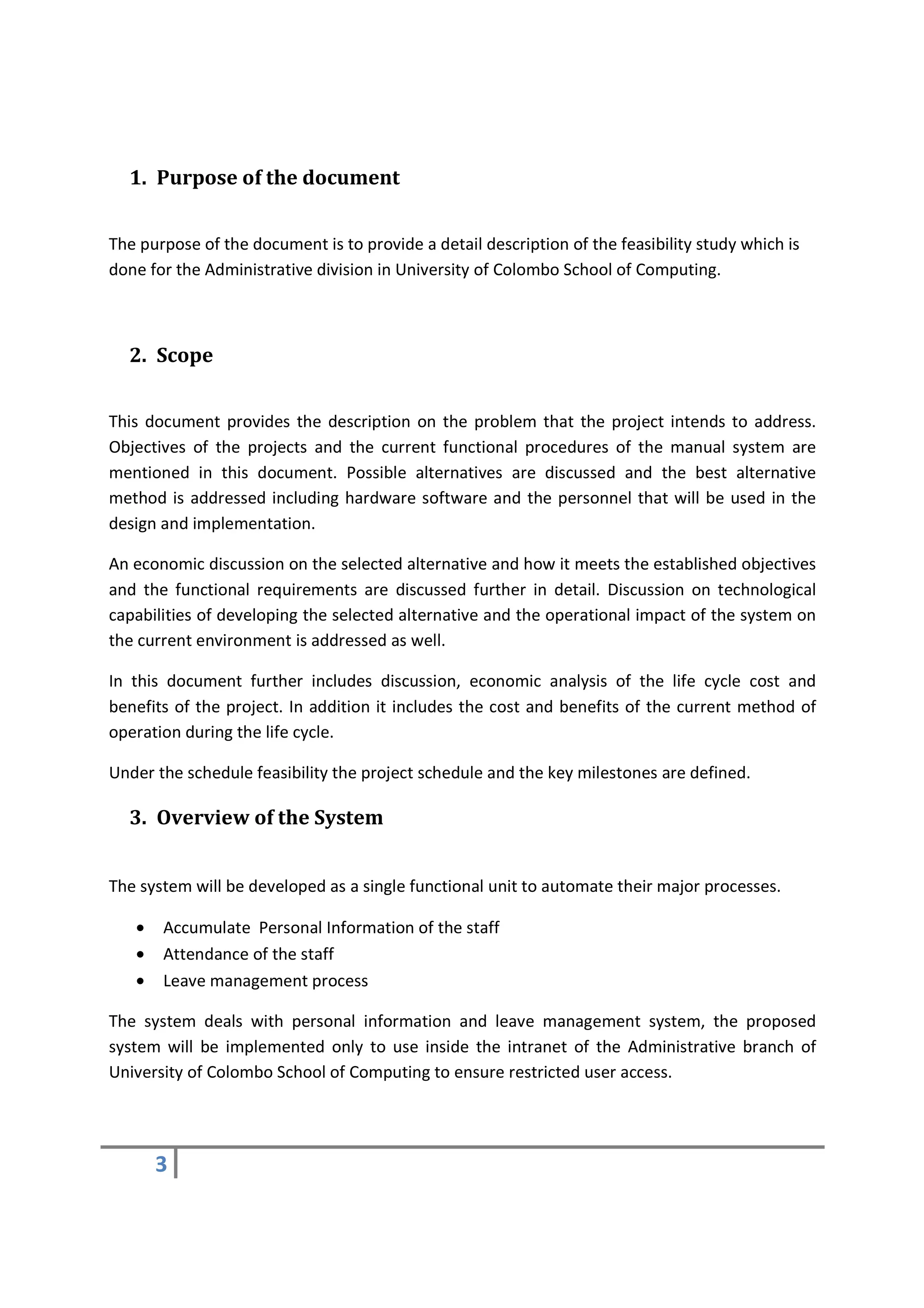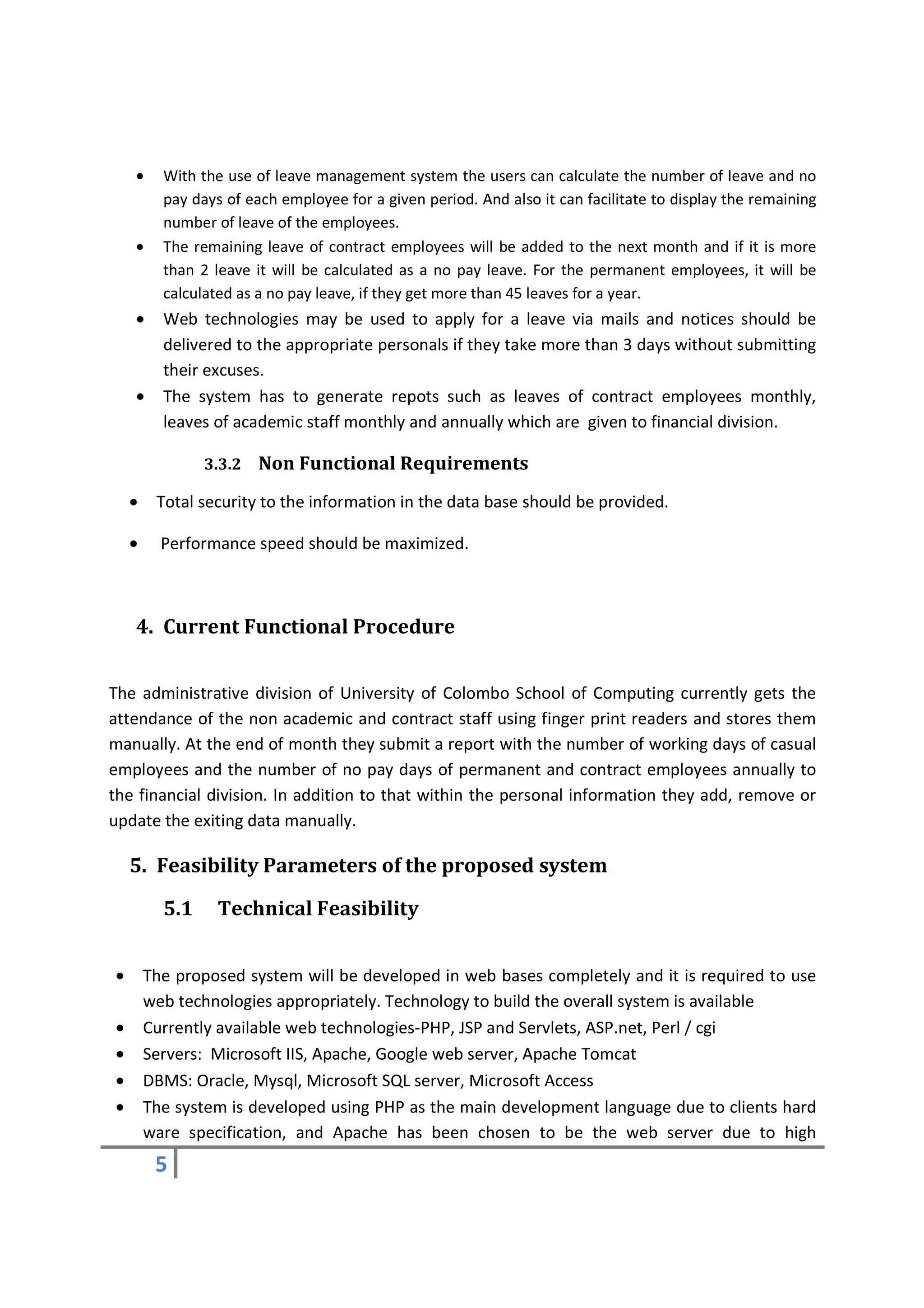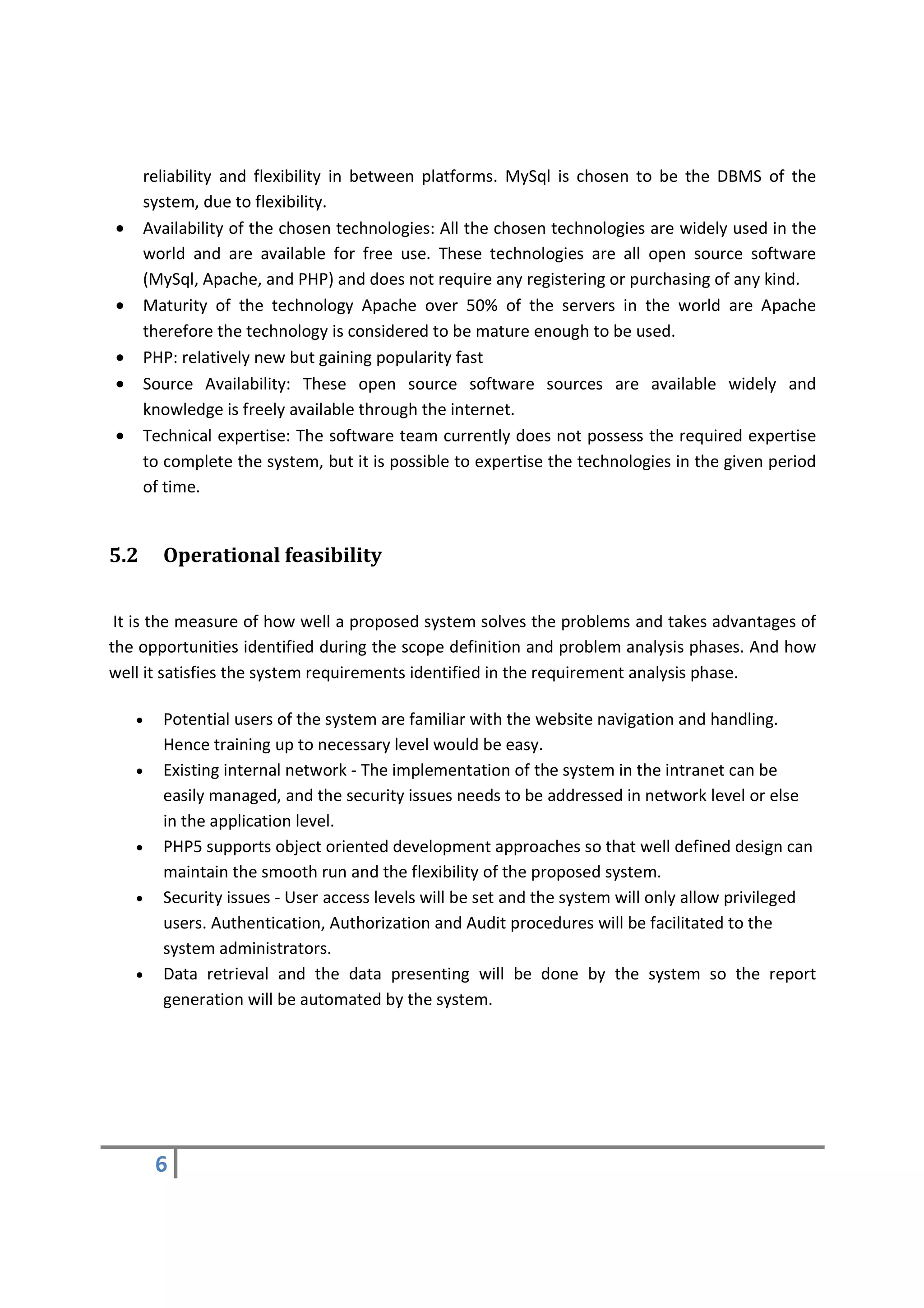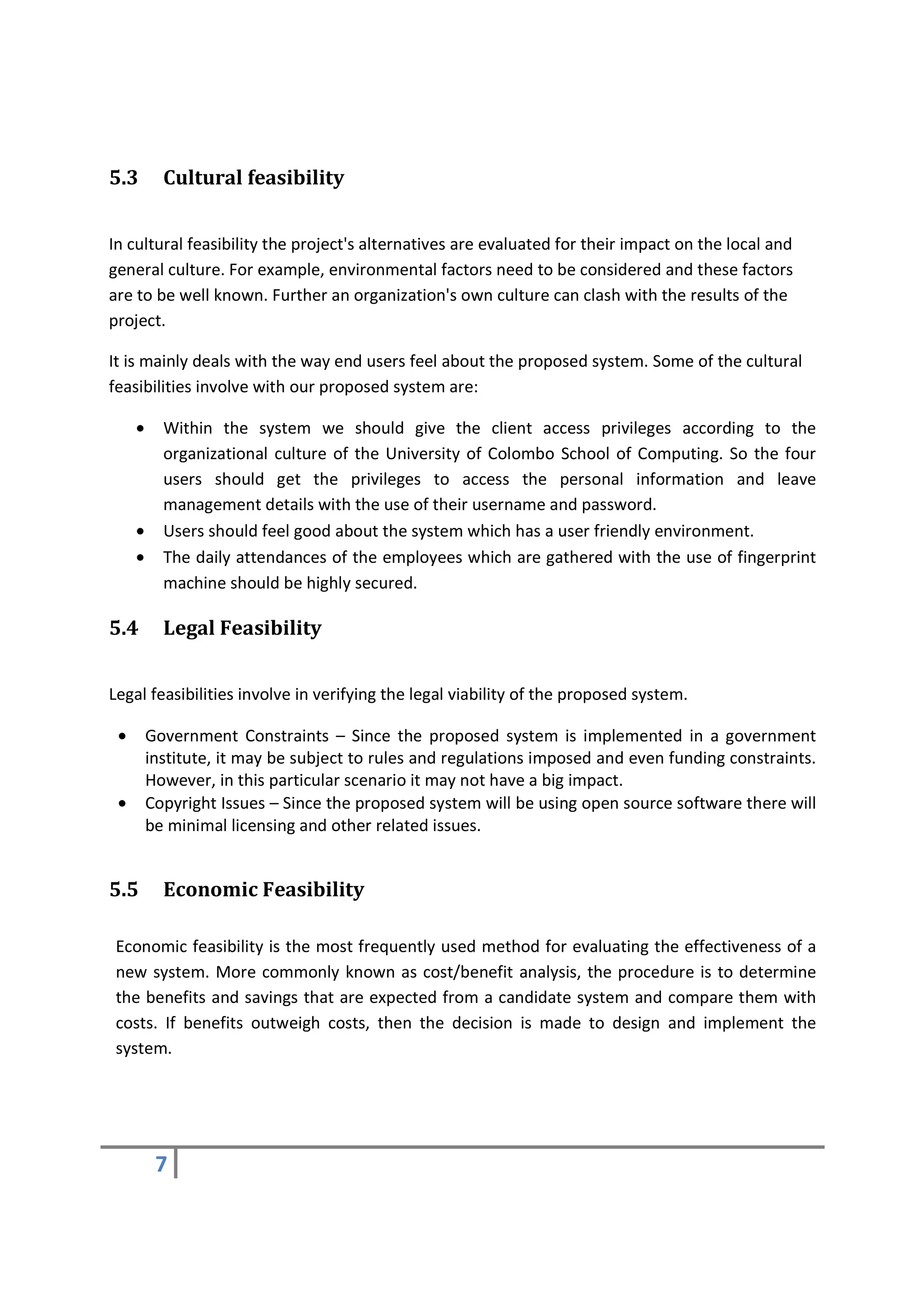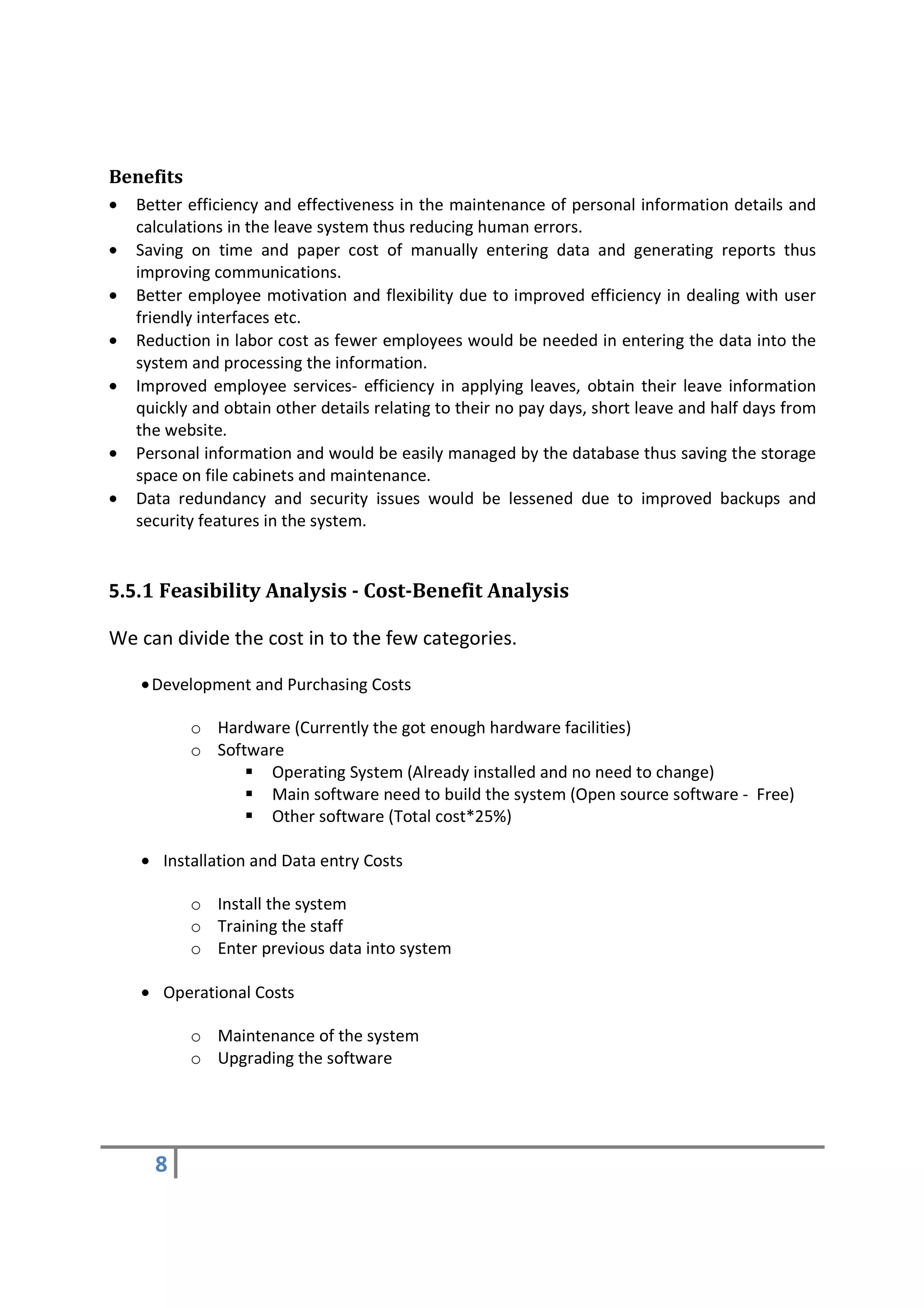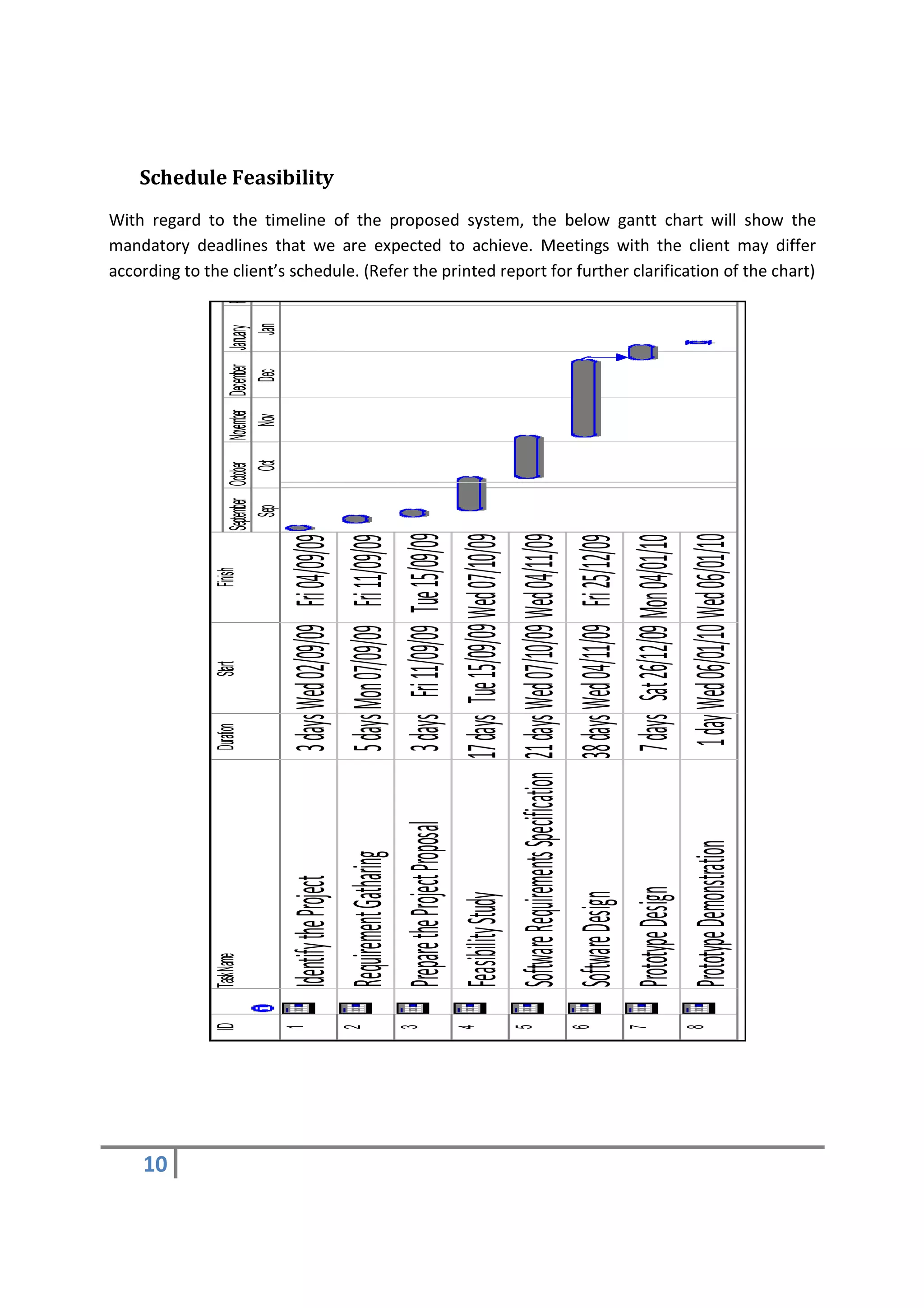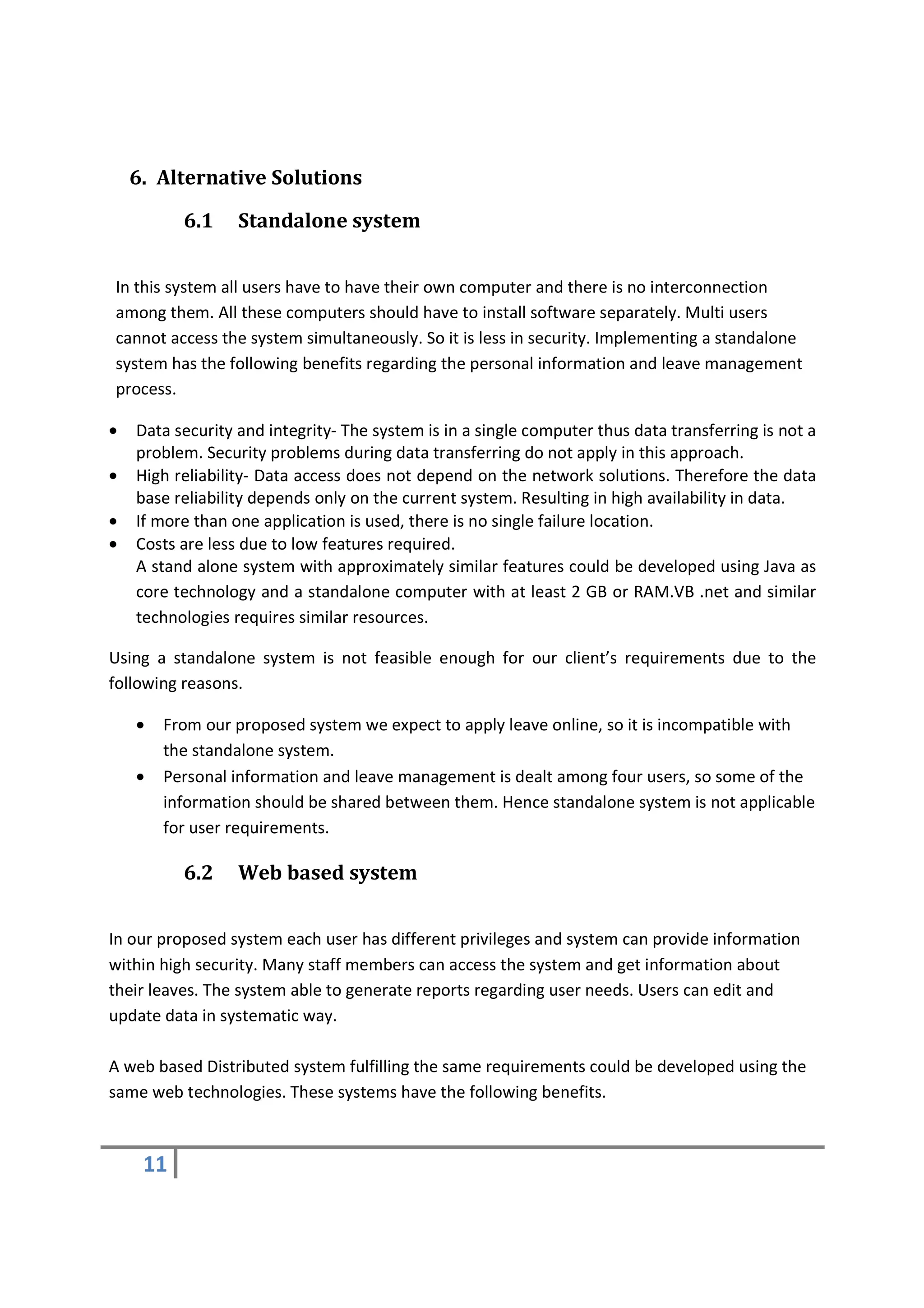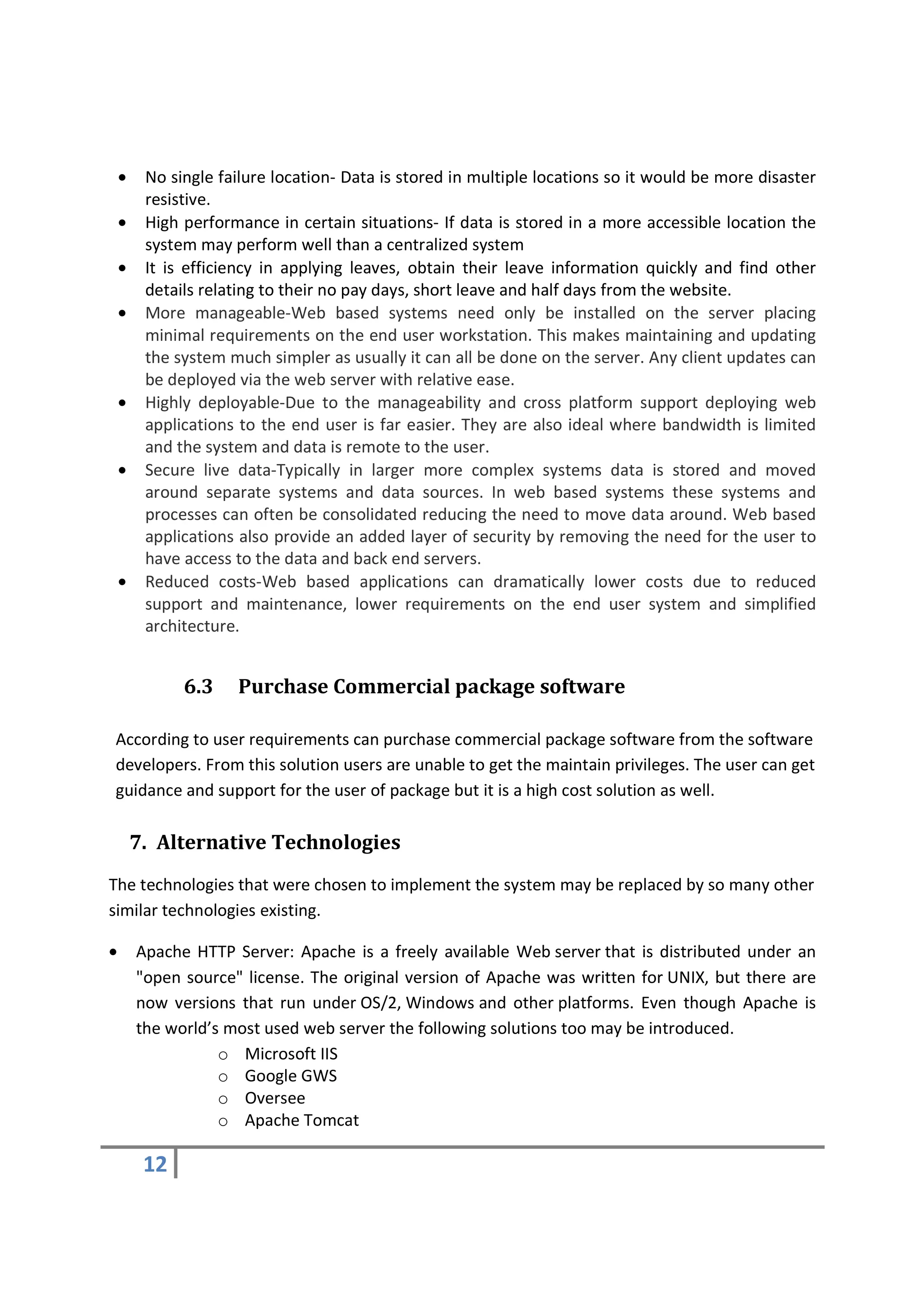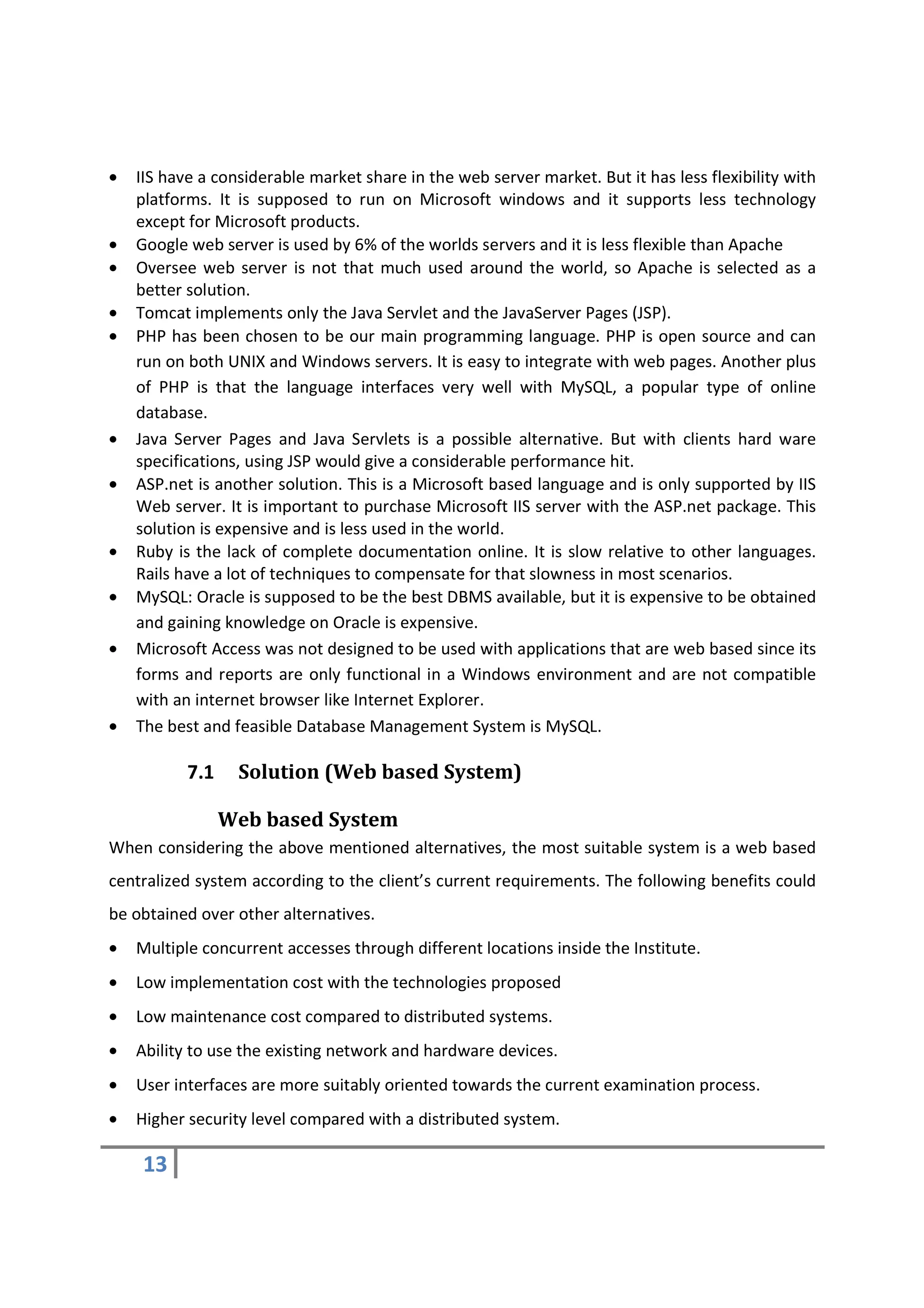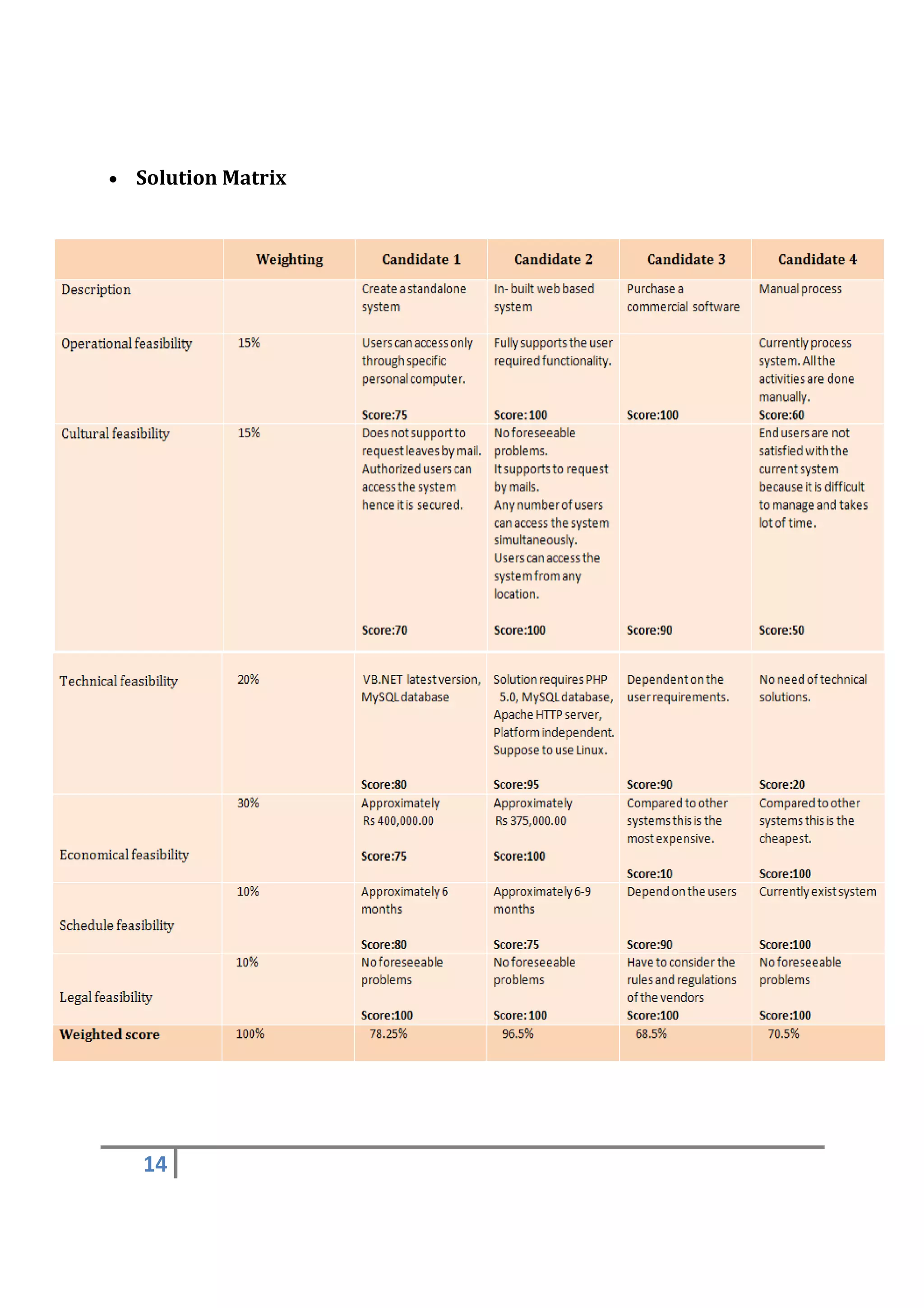The document provides a feasibility study for a proposed Personal Information and Leave Management System for the Administrative division of the University of Colombo School of Computing. It outlines the purpose, scope, overview of the system including software/hardware requirements. It analyzes the technical, operational, cultural, legal and economic feasibility of the proposed system. It discusses the current manual process and identifies alternative solutions such as a standalone system, web-based system, or purchasing commercial software. It recommends a web-based system using open source technologies like PHP, MySQL, and Apache as the best alternative. A cost-benefit analysis and project timeline are also provided.
